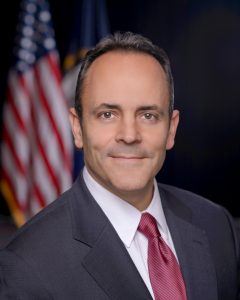 Last week, joined by legislators and officials from local government, education and business associations, Gov. Matt Bevin ceremonially signed House Bill 3, which repeals the state law requiring payment of a set hourly base (prevailing) wage to workers on public works construction projects.
Last week, joined by legislators and officials from local government, education and business associations, Gov. Matt Bevin ceremonially signed House Bill 3, which repeals the state law requiring payment of a set hourly base (prevailing) wage to workers on public works construction projects.
The prevailing wage is the wage set by government, which contractors and subcontractors must pay workers hired for public works projects (such as roads, buildings and sewers) that cost more than $250,000.
“This is one of those win-wins,” said Gov. Bevin. “We want to be good stewards of the limited resources we have, and this is going to be transformative in terms of just the financial impact alone on the Commonwealth of Kentucky. Studies estimate that, conservatively, it will result in somewhere between $125 and $135 million dollars a year in savings.”
A 2014 study by the Kentucky Legislative Research Commission found that the prevailing wage law inflated labor cost by 24 percent and increased the total project cost by 10 to 16 percent on average.
Experts note that prevailing wage regulations create a financial strain on local governments and school districts. In fact, the Kentucky Department of Education estimates that prevailing wage regulations have cost the Commonwealth at least $100 million since 1996.
“Without artificial, and often inflated, wage rates set by antiquated prevailing wage laws, Kentucky is now positioned to complete necessary construction projects at lower costs,” said Rep. Adam Koenig. “We are committed to spending every single tax payer dollar wisely, and Kentucky cities are already saving money due to the swift passage of the prevailing wage repeal by the House and Senate, and Governor Bevin’s prompt signing.”
“As a sponsor of similar legislation last Session, I applaud the efforts of Governor Bevin and my colleagues in the legislature who helped make this prevailing wage repeal bill become law in 2017,” said Sen. Wil Schroder. “This measure will provide more money for construction in our school districts, ultimately putting taxpayer dollars to better use.”
 Weather
Weather Traffic
Traffic @LouisvilleDispatch
@LouisvilleDispatch @LouisvilleDisp
@LouisvilleDisp Subscribe
Subscribe
